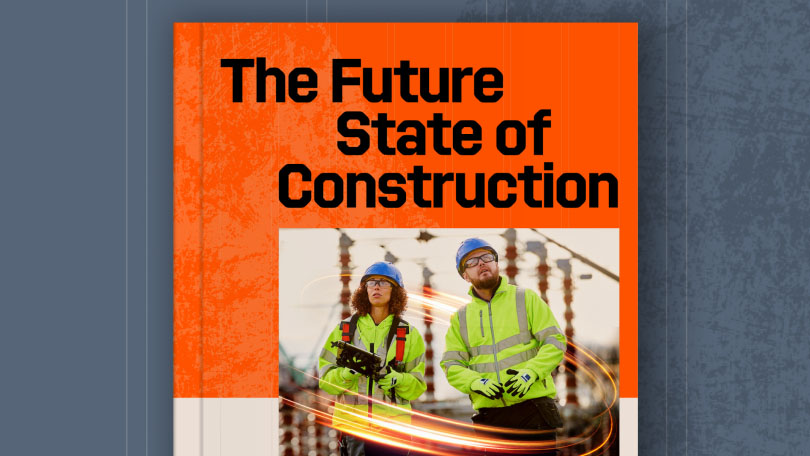— 9 min read
From Tender to Contract: How Digital Workflows Reduce Risk & Improve Accountability


Last Updated Sep 11, 2025

Tim Rogers
Co-Founder and Product Lead
After nearly a decade working on project teams in commercial construction, Tim co-founded ProcurePro, a subcontractor procurement platform purpose-built for the construction industry. His motivation came from first-hand experience with the significant inefficiencies of the procurement process, which is often resource-intensive, inefficient, and error-prone for head contractors. Since co-founding ProcurePro in 2020, Tim has channelled his industry experience into building the very best procurement software. Designed as the complete solution, ProcurePro provides a centralised platform for everything from tendering to commitments, transforming the way head contractors manage procurement.

Anna K. Cottrell
Writer and Editor
Anna K. Cottrell is a writer and researcher with an expertise in the property and finance sectors.
Last Updated Sep 11, 2025

Contributed by ProcurePro, a Procore Marketplace Partner
The buy-out phase of construction, from tender award through contract, remains one of the riskiest stages of the process. Why? Quite simply, the sheer volume of information handled by construction professionals at this stage in the process creates ample opportunity for error. Manual spreadsheets, email threads and late design changes create data loss, scope ambiguity and contractual disputes.
This is bad news at a time when construction profit margins are tight, with little room for risk-related losses. Yet despite their best efforts, QSs and commercial directors have traditionally struggled with the volatility that is inherent in buy-out.
That’s how digital workflow software like ProcurePro came about—as a direct response to the myriad issues construction professionals have to navigate to mitigate risk. And who better to design this type of digital solution than someone who has first-hand experience of juggling the complexities of vetting subcontractors and assessing risk?
We spoke to Tim Rogers, formerly construction project manager at Hutchinson, Co-Founder & Head of Product at ProcurePro. Tim has overseen over £3 bn of procurement packages and has first-hand insight into how digitisation shortens procurement, mitigates risk and improves commercial outcomes.
Table of contents
The Tender-to-Contract Gap and the Tale of Endless Admin
Every project manager will be able to relate to Tim’s experience of spending countless hours manually reconciling emails and spreadsheets, instead of focusing on strategic procurement and delivery readiness. As he tells Procore, it wasn’t any single ‘aha!’ moment that finally made him realise that there had to be a better way to organise procurement workflows:
It was more an accumulation of years of being in the trenches: long hours, six-day weeks, just doing manual admin. Everything consisted of disconnected spreadsheets, Word documents, emails. There was just so much copying of data and information from one item to the next, wasting so much time.

Tim Rogers
Co-Founder and Product Lead
ProcurePro
The core concept that helped Tim co-develop ProcurePro is a sharable, centralised knowledge database that helps construction practitioners make better decisions and reduces risk.
From Individual Scope Gap Cases to a Content Library
It’s not as if project managers don’t factor scope gaps into their risk mitigation strategies; they do. The problem is, they are limited to their own experience because they don't have access to the lessons or knowledge of others, which prevents them from seeing important patterns in where scope gaps tend to emerge and why. As Tim puts it,
A single scope gap might cost thousands and thousands of dollars for a project team, and you can bet your bottom dollar that that project team's never going to miss that scope gap on any future projects ever again. But you might have a project across the road or a project team who doesn't hear about that same issue and we repeat the mistakes.

Tim Rogers
Co-Founder and Product Lead
ProcurePro
The solution is to develop a centralised Scope of Works content library that captures and evolves with the way a business operates. The library should be a living, breathing resource that adapts as the market changes, methodologies improve, new materials emerge, and scope gaps are identified. This ensures teams have a dynamic reference point that reflects current best practice, not just historical outcomes.
Digitising procurement workflows also improves project managers’ sense of agency and control over their selection of subcontractors. Digitisation in buy-out is not simply about efficiency for its own sake: the shifts are qualitative. Smarter decisions improve margins, and people who have access to longitudinal data inevitably learn more about risk than those who are stabbing in the dark on a contract-by-contract basis.
Real-Time Project Visibility
Another aspect of buy-out that traditionally gets in the way of a project manager’s ability to gauge risk is the limited communication with project teams.
Historically, executives, particularly on larger projects, have had monthly meetings with the project teams to report on the progress: where they're up to, how's the program looking, what's the budget doing, how are you going on procurement. That gives the executives one day a month of visibility.

Tim Rogers
Co-Founder and Product Lead
ProcurePro
Having a digital system like ProcurePro means that an executive can jump online and have a look at where a project's up to at every point in time. This gives them the ability to be more proactive, to identify risks earlier as opposed to once a month and implement mitigation strategies to reduce any shortcomings.
In essence, a digitised workflow helps shift executive behaviour: from a set amount of oversight to however much oversight they need to make timelier, more impactful decisions.
Superior Document Management
On large commercial projects, the rate of change in drawings, specifications, and other documents is immense. That’s why procurement systems and document management systems must work cohesively. If subcontractors and the supply chain don’t have visibility of the latest documents, there’s a real risk they’ll price against outdated information - leading to costly surprises in the form of variations once contracts are awarded.
Document management, particularly on large commercial projects, is really, really critical. In a lot of projects in Australia and the UK, builders are often engaged on Design and Construct contracts…. There will be thousands and thousands of drawings on a project with all the different disciplines, and so making sure that everyone has access to those current docs and drawings at all times is paramount.

Tim Rogers
Co-Founder and Product Lead
ProcurePro
A digital ‘source of truth’ reduces the possibility that a crucial detail will be lost as the project is evolving. In the same way that high-rise residential projects are now required to keep a ‘golden thread’ of information about a building’s evolution, procurement professionals across the full spectrum of building projects can benefit from a similarly rigorous approach to record-keeping.
Mitigating Subcontractor Risk
Assessing and mitigating risk at the buy-out phase is especially crucial in the current climate where a number of risk factors threaten margins. Material costs have been an obvious and ongoing concern, but the issue that is emerging as critical right now is subcontractor insolvency. Tim confirms that this is the number one concern for procurement professionals as increasing numbers of subcontractors are going bust:
We hear about this a lot, and the impacts of having an insolvent subcontractor on your project is pretty significant. It's not just replacing a subcontractor. It is re-scoping, re-contracting, re-tendering. That new subcontractor needs to take over the existing works, take care of the defects of their predecessor, re-certify, re-test everything.
There's a slew of things that need to occur to take over a project, and the impacts go beyond the budget, affecting the project team and the program especially.

Tim Rogers
Co-Founder and Product Lead
ProcurePro
The most obvious and detrimental impact of having a subcontractor go bust is, obviously, going over budget. And yet, subcontractor insolvency is very frequent, with 2,514 sub-contractor insolvency cases in 2024 alone.
Mitigating Against Sub-Contractor Insolvency
Despite how common it is, procurement professionals are far from powerless to mitigate against this type of risk. In fact, procurement is the perfect stage of the process to implement controls and mitigation strategies to make sure you’re engaging financially healthy subcontractors.
How? If you’re using a digital workflow system, like ProcurePro, you can see how many projects a subcontractor is already working on.
We can show how many projects that subcontractor is currently working and flag this at key decision points. And so that's proven really useful for the commercial team because it highlights potential capacity issues which is a key contributor to insolvency.

Tim Rogers
Co-Founder and Product Lead
ProcurePro
Knowing how many projects a sub-contractor is already working on - and how they’re pricing them - has additional benefits beyond risk mitigation. This information can become a source of bulk purchasing opportunities, which can further improve margins:
We also capture projects that they are pricing currently. If we can see a subcontractor is also pricing four of our jobs, we can proposition them, provided they have the resources to do so, and ask, ‘hey, we'll give you these three projects if you can give us a commercial discount.’

Tim Rogers
Co-Founder and Product Lead
ProcurePro
Implementation Roadmap: Is Workflow Digitisation Easy?
A digital workflow software is only as good as it is easy to implement. One of the biggest obstacles to adoption of new workflow systems is the reluctance to disrupt old patterns that are working. As Tim explains, however, implementing a system like ProcurePro is all about finding ways to integrate existing project management tools with new ones, rather than having to tear down existing processes.
It is possible to integrate a construction management software like Procore within ProcurePro, for example, by directly embedding into the tendering or buyout functionality. This means the project teams can import project documentation and drawings directly from their source. Tim elaborates:
What that connection will enable is if and when the consultants are revising their docs and drawings throughout the job whilst we have live tenders going out, project teams can get notified of those changes. They can optionally sync and import that into their tenders at the click of a button, send out an addendum, and notify all the subcontractors to make sure that everyone's working off the right drawings at the right time.

Tim Rogers
Co-Founder and Product Lead
ProcurePro
Connected systems help create the single source of truth that is so crucial to risk reduction.
Quick Access to Vendor Ratings and a Pricing Library in the Works
Subcontractor selection is often driven by cost, which is why giving project teams access to a pricing library is so valuable. It enables them to spot both opportunities and risks in the market pricing they’re seeing at any given moment. But cost isn’t the only factor that matters. A vendor’s past performance is equally critical in the decision-making process. Making that performance data available at the right moments not only supports better judgment calls but also delivers enormous benefits by reducing risk and improving project outcomes.
Having a vendor ratings system with a pricing library is an empowering tool:
It gives project teams the ability to leverage historic information to negotiate harder, make better decisions, and then gives the executive team more comfort around the decisions that the project teams are making.

Tim Rogers
Co-Founder and Product Lead
ProcurePro
Future Outlook
A vendor ratings system is one innovation among many that will reshape the buy-out phase of procurement as the current technology matures further. You’ve probably guessed it: AI will play an important role in future developments. Again, Tim stresses that new systems, even when they are empowered by AI, aren’t reinventing the wheel. Rather, they’re supercharging human professionals’ capabilities:
AI, without doubt, will be able to automatically pull together docs drawings that are relevant for packages, send out the tenders, manage the comms and RFIs back and forth, likely automate a lot of the analysis, but I still feel pretty strongly that we're going to need humans within the process making those nuanced decisions. But they'll certainly be making smarter decisions in a faster and more efficient fashion.

Tim Rogers
Co-Founder and Product Lead
ProcurePro
Project managers will still be in the driver’s seat of the buy-out process: they’ll just be driving much faster and much safer.
Categories:
Written by

Tim Rogers
Co-Founder and Product Lead | ProcurePro
After nearly a decade working on project teams in commercial construction, Tim co-founded ProcurePro, a subcontractor procurement platform purpose-built for the construction industry. His motivation came from first-hand experience with the significant inefficiencies of the procurement process, which is often resource-intensive, inefficient, and error-prone for head contractors. Since co-founding ProcurePro in 2020, Tim has channelled his industry experience into building the very best procurement software. Designed as the complete solution, ProcurePro provides a centralised platform for everything from tendering to commitments, transforming the way head contractors manage procurement.
View profile
Anna K. Cottrell
Writer and Editor | Freelance
Anna K. Cottrell is a writer and researcher with an expertise in the property and finance sectors.
View profileExplore more helpful resources

Construction Management Contracts: A Complete UK Guide
Managing construction contracts can lead to an extensive physical paper trail. Sharing contracts, getting signatures and managing timelines is difficult when teams and clients are scattered across job sites and...

Key Differences Between Contractors & Subcontractors
In UK commercial construction, main (or principal) contractors engage directly with project owners to deliver complete construction programmes, while subcontractors perform specific scopes of work under the main contractor’s management....

The Role of RFPs in UK Construction Projects
Requests for Proposals (RFPs) are a core document for construction procurement in the United Kingdom. Effective RFPs align expectations, establish clear evaluation criteria, and create accountability between clients and contractors....

Financial Management in Construction Projects
Effective financial management can make or break construction projects. Teams that master budgeting, cash flow and cost control are better positioned to deliver projects on time, within budget and with...
